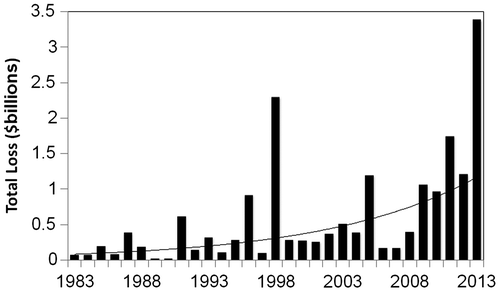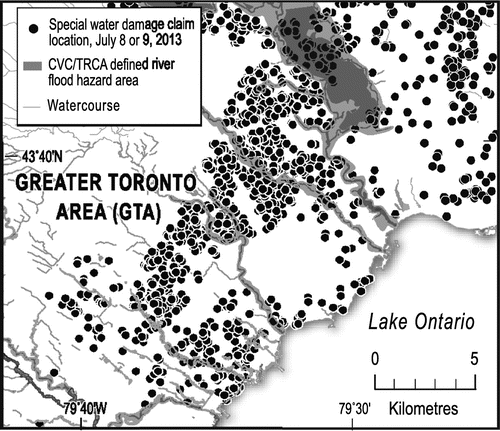Figures & data
Table 1. Top five causes of hydrological and meteorological disaster events and proportion of total number of meteorological and hydrological disasters recorded in the Canadian Disaster Database, 1983–2013.
Table 2. Selection of flood disaster events exceeding CAD $40 million in damages, 1996 to present.
Figure 1. Number of requests for Disaster Financial Assistance Arrangements (DFAA) assistance from 1970 to 2010.

Figure 2. The Insurance Bureau of Canada (IBC) notes a steady increase in the costs of natural catastrophes for the Canadian insurance industry. Overall catastrophic losses recorded by the industry approached or exceeded CAD $1 billion* in 1998, 2005, 2009, 2010, 2011, 2012 and 2013, though IBC (Citation2014a) notes a change in data collection methods starting in 2009. At over $3 billion in losses, 2013 saw the greatest amount of natural catastrophe-related damages since the industry began recording figures in 1983. Much of the damage experienced in 2013 was associated with riverine and extreme rainfall related flooding in southern Alberta and southern Ontario.

Figure 3. A sample of water damage insurance claims in the western Greater Toronto Area filed on 8 or 9 July 2013. “Special” water damage claims typically include sewer backup losses but exclude other types of insured water damages, including plumbing and appliance failure. The claim sample is from a selection of property and casualty (P&C) insurers representing 17.5% of the Ontario personal property market. River flood hazard area delineations provided courtesy of Credit Valley Conservation and Toronto Region Conservation Authority.

